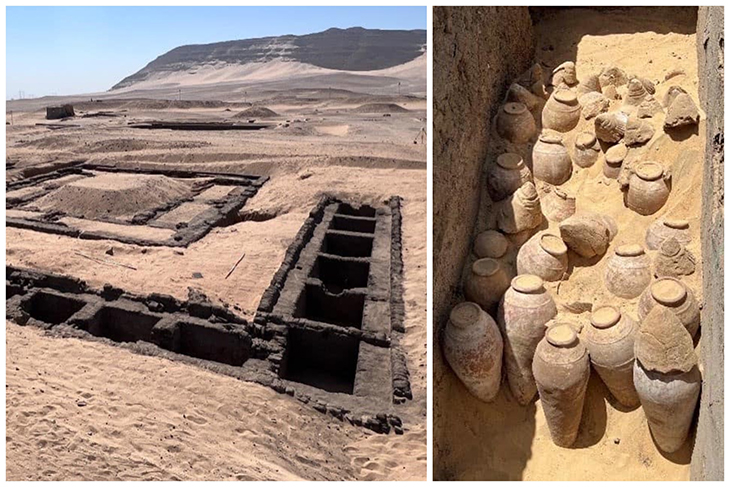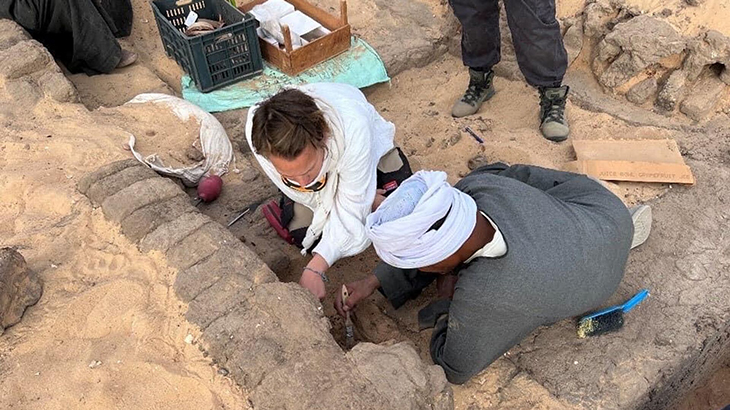
Archaeologists have made a groundbreaking discovery in an ancient Egyptian Queen’s tomb, unearthing sealed jars of wine dating back 5,000 years. This remarkable find belongs to Queen Meret-Neith, a figure from 3,000 BC, making it one of the oldest caches of its kind. According to researchers from the University of Vienna, Queen Meret-Neith was an exceptionally influential woman, likely even the first female pharaoh of ancient Egypt. Despite the enigma surrounding her true identity, the excavation shed light on her prominence.
Notably, Meret-Neith is unique in Egyptian history as the sole woman granted a monumental tomb within Egypt’s inaugural royal cemetery in Abydos. The tomb complex she commanded, located in the Abydos desert, not only housed her burial chamber but also the tombs of 41 courtiers and servants. Constructed using unbaked mud bricks, clay, and wood, this vast structure testified to her significant standing.
The sealed wine jars discovered in her tomb offer a fascinating glimpse into ancient Egyptian culture. The presence of these well-preserved artifacts underscores the importance of wine in ritual and everyday life during her era. The sheer quantity of wine, some jars still sealed, speaks to the grandeur of her burial provisions.
Furthermore, inscriptions found at the site provided vital clues about Meret-Neith’s role in governance. It appears she held pivotal positions, such as overseeing central government offices like the treasury. This revelation cements her historical significance, suggesting that she wielded substantial political power and influence.
This discovery not only enriches our understanding of ancient Egyptian customs and burial practices but also illuminates the extraordinary role of Queen Meret-Neith, a powerful and enigmatic woman who left an indelible mark on history.

Archaeologist Professor Christiana Köhler of the University of Vienna mentioned that many of the discoveries are currently being analyzed to unveil their mysteries.
“The wine was no longer liquid and we can’t tell if it was red or white,” she said. “We found a lot of organic residue, grape seeds and crystals, possibly tartar and all of this is currently being scientifically analyzed.”
“It is probably the second oldest direct evidence for wine, the oldest also comes from Abydos.”
Due to meticulous excavation techniques and the application of advanced archaeological technologies, the team demonstrated that the tombs were constructed in multiple phases spanning a considerable duration. This finding, coupled with additional evidence, significantly challenges the notion of ritual human sacrifice during royal burials in the 1st Dynasty. Although this idea was commonly assumed in early studies, it was never definitively proven.
“The new excavations bring to light exciting new information about this unique woman and her time.”
The team is collaborating with the Egyptian Ministry of Tourism and Antiquities, the German Archaeological Institute in Cairo, the University of Vienna, the Vienna University of Technology in Austria, and Lund University in Sweden.
What are your thoughts? Please comment below and share this news!
True Activist / Report a typo


